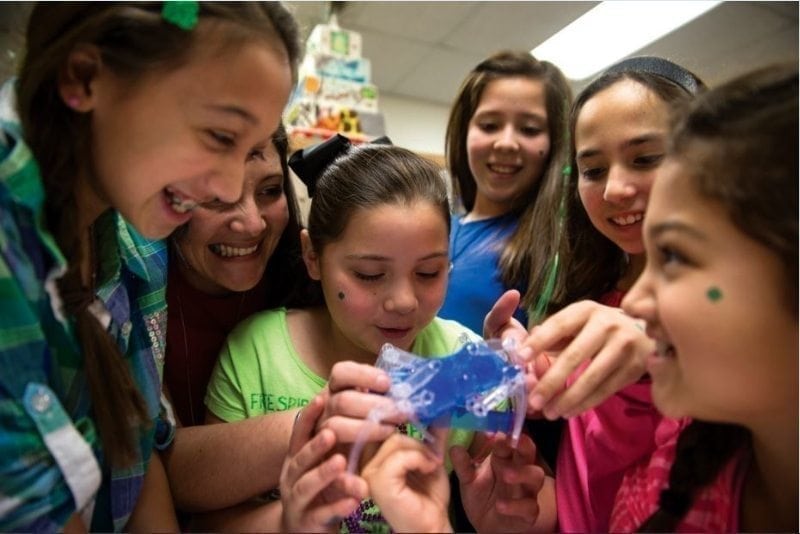The Girl Scouts are, in some ways, never going to change. They’re always going to be about empowering young women to follow their passion in a safe space. But, as CEO Anna Maria Chavez and Director of Communications Stewart Goodbody shared at CES 2016, the group is updating to better connect with the girls. “Girls don’t see the world as digital or not digital; technology is a part of their everyday lives,” Goodbody said. “To get to where the girls are, it’s important to include that in our everyday programming. We’re looking at ways to make the Girl Scout experience more digital in an organic way, so we are talking to the girls in their own language.”
One initiative that’s already in place is Digital Cookie 2.0. The Girl Scouts are now building websites to move their infamous cookies. “They can send email links to share their sales plans and goals, as well as share what they’ll use the revenue for. Part of the cookie program allows them to generate revenue and apply them to action programs. You’ll see many of them taking on science, tech, engineering, and math for a practical application that’s going to serve a need either domestically or globally. They’re taking action most adults aspire to do, but they’re doing it at the age of 8,” said Chavez.
But the Girl Scouts’ commitment to getting more girls and young women interested in STEM goes well beyond the Digital Cookie. “We want them to make sure they’re not just users of tech, but creators of tech.” In a way, the Girl Scouts have always encouraged this kind of creativity in STEM. Founder Juliette Gordon Lowe knew it was important to expose young girls to science; one of the original badges was actually a welding badge. Today’s STEM series badges allow girls to meet with women scientists, complete a graphic design project, learn about the physics of roller coasters, and more. And, they start young. Girls as young as five build robots in Girl Scouts.
But perhaps more valuable than any of these particular initiatives is the environment in which they are realized. “What we have found is that girls have a great interest in STEM, but what’s going on in the classroom isn’t resonating with them, whether they’re not being called on enough by a teacher or they feel it’s not their place to answer questions because girls are more likely to raise their hands,” Chavez said.
“What makes Girl Scouts such a viable option is that it’s an all girl space where we allow girls to dig in with science experiments and math applications. It’s a safe place where they can hit a roadblock, pick themselves up, and go forward again. That’s what we’re trying to do across the United States.”
Although Girl Scouts is primarily about girls and women learning with and supporting each other, Chavez is quick to recognize the importance of men in the fight to get more women into STEM professions. “One of the top reasons girls go into STEM careers is because they had a male figure in their family introduce them to STEM. They encouraged their daughter or niece to go into a STEM career. It takes all of us to send the right positive messages to girls: Yes, you can do it. Continue to dream big. We’re going to support you to get there.”
Melissa Hirsch is a Girl Scouts Alum. Her favorite Girl Scout Cookie is a toss-up between Thin Mints and Caramel deLites.










